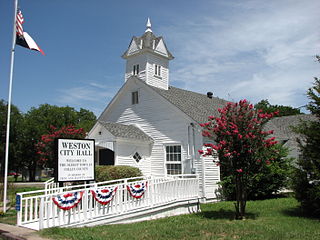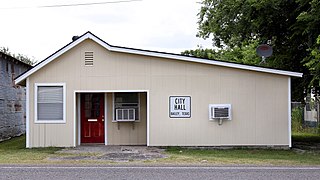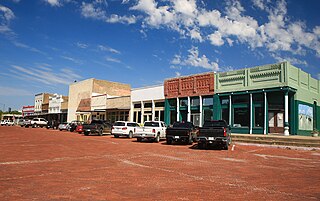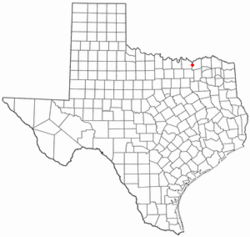
Hunt County is a county in the U.S. state of Texas. As of the 2020 census, its population was 99,956. Its county seat is Greenville. The county is named for Memucan Hunt, Jr., the first Republic of Texas Minister to the United States from 1837 to 1838 and the third Texas Secretary of the Navy from 1838 to 1839. Hunt County is located in Northeast Texas, at the eastern edge of the Dallas/Fort Worth Metroplex and the western edge of East Texas. Hunt County is part of the Dallas-Fort Worth-Arlington metropolitan statistical area.

Fannin County is a county in the far northeast of the U.S. state of Texas, on the border with Oklahoma. As of the 2020 census, its population was 35,662. The county seat is Bonham.

Industry is a town in Austin County, Texas, United States, at the junction of State Highway 159 (SH 159) and Farm to Market Road 109 (FM 109). The population was 268 at the 2020 census. Industry was the first permanent German settlement in Texas. Friedrich Ernst, Industry's founder, settled here in 1831 and gained Industry the title "Cradle of German Settlement in Texas".

Hooks is a city in Bowie County, Texas, United States. It is part of the Texarkana metropolitan area and had a population of 2,518 at the 2020 U.S. census.

Lavon is a city in Collin County and has been one of the U.S. state of Texas's fastest-growing communities, with a 2000 census-tabulated population of 387 and 2020 tabulated population of 4,469.

Weston is a city in Collin County, Texas, United States. The population was 563 at the 2010 census, and 283 at the 2020 census.

Bailey is a city in Fannin County, in the U.S. state of Texas. The population was 289 at the 2010 census, up from 213 at the 2000 census.

Dodd City is a town in Fannin County, in the U.S. state of Texas. The population was 369 at the 2010 census, down from 419 at the 2000 census.

Ector is a city in Fannin County, Texas, United States. The population was 695 at the 2010 census, up from 600 at the 2000 census.

Honey Grove is a city in Fannin County, Texas, United States. Honey Grove bills itself as "The Sweetest Town in Texas". The population was 1,668 at the 2010 census.

Ladonia is a town in Fannin County, Texas, United States. Its population was 612 at the 2010 census.

Leonard is a city in Fannin County, Texas, United States. The population was 1,990 at the 2010 census.

Ravenna is a city in Fannin County, Texas, United States. The population was 209 at the 2010 census.

Trenton is a city in Fannin and Grayson counties, Texas, United States. The population is 854 currently.

Neylandville is a town in Hunt County, Texas, United States. The population was 97 at the 2010 census, up from 56 at the 2000 census.

Blossom is a town in Lamar County, Texas, United States. The population was 1,402 at the 2020 census.

Buffalo is a city in Leon County, Texas, United States. The population was 1,767 at the 2020 census.

Rice is a city in Navarro County, Texas, United States. The population was 923 at the 2010 census.

Las Lomas is a census-designated place (CDP) in Starr County, Texas, United States. The population was 3,147 at the 2010 census. Las Lomas is one of several colonias in Starr County, within the Rio Grande Valley region. The name is derived from the community's terrain.

Josephine is a city in Collin and Hunt counties in the U.S. state of Texas. Its population was 812 at the 2010 census, with 755 residents in Collin County and 57 in Hunt County. By 2020, its population increased to 2,119.
















